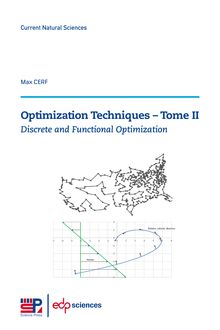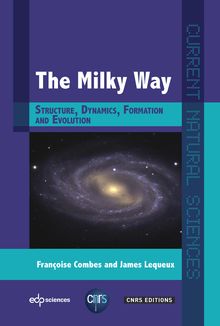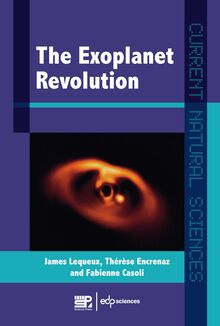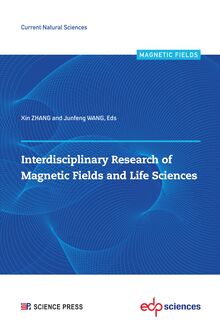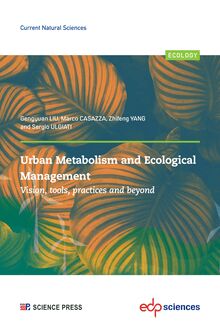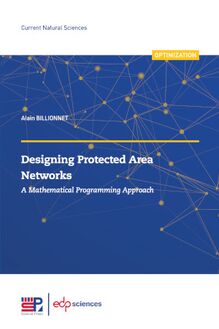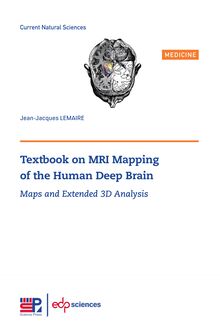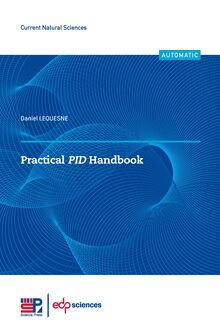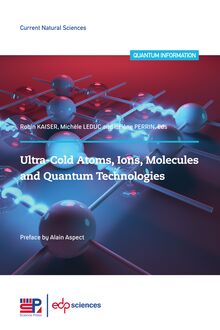-
 Univers
Univers
-
 Ebooks
Ebooks
-
 Livres audio
Livres audio
-
 Presse
Presse
-
 Podcasts
Podcasts
-
 BD
BD
-
 Documents
Documents
-
- Cours
- Révisions
- Ressources pédagogiques
- Sciences de l’éducation
- Manuels scolaires
- Langues
- Travaux de classe
- Annales de BEP
- Etudes supérieures
- Maternelle et primaire
- Fiches de lecture
- Orientation scolaire
- Méthodologie
- Corrigés de devoir
- Annales d’examens et concours
- Annales du bac
- Annales du brevet
- Rapports de stage
La lecture à portée de main
Découvre YouScribe en t'inscrivant gratuitement
Je m'inscrisApplication of Microwave Heating in the Comprehensive Utilization of Titanium Resources , livre ebook
Découvre YouScribe en t'inscrivant gratuitement
Je m'inscrisEn savoir plus
En savoir plus

Description
Contents
Preface . . . . . . . . . . . . . . . . . . . . . . . . . . . . . . . . . . . . . . . . . . . . . . . . . . . . . III
CHAPTER 1
Microwave Absorbing Properties and Temperature Behaviour . . . . . . . . . . . . 1
1.1 Dielectric Properties . . . . . . . . . . . . . . . . . . . . . . . . . . . . . . . . . . . . . . 2
1.2 Measuring Instrumentation and Principle . . . . . . . . . . . . . . . . . . . . . . 2
1.3 Microwave Heating Theory . . . . . . . . . . . . . . . . . . . . . . . . . . . . . . . . . 4
1.4 Microwave-Absorbing Characteristics of Oxidised Ilmenite . . . . . . . . . 5
1.4.1 Materials and Procedure . . . . . . . . . . . . . . . . . . . . . . . . . . . . . 6
1.4.2 Microwave-Absorbing Characteristics of Carbothermic Reduction Products of Ilmenite and Oxidised Ilmenite . . . . . . . 6
1.4.3 Effect of Carbonaceous Reducing Agents on Microwave Absorbing Properties of Ilmenite . . . . . . . . . . . . . . . . . . . . . . . 13
1.4.4 Effect of Catalyst on Microwave Absorbing Properties of Ilmenite . . . . . . . . . . . . . . . . . . . . . . . . . . . . . . . . . . . . . . . . 17
1.5 Microwave Absorbing Properties of Mechanically Activated Ilmenite . . 21
1.5.1 Materials and Procedure . . . . . . . . . . . . . . . . . . . . . . . . . . . . . 22
1.5.2 Effect of Mechanical Activated on Microwave Absorbing Properties of Ilmenite . . . . . . . . . . . . . . . . . . . . . . . . . . . . . . . . 23
1.6 Microwave Absorbing Characteristics of Mechanical Activated High Titanium Slag . . . . . . . . . . . .. . . . . . . . . . . . . . . . 26
1.6.1 Materials and Procedure . . . . . . . . . . . . . . . . . . . . . . . . . . . . . 26
1.6.2 Dielectric Loss Factor of Mechanical Activated High Titanium Slag . . . . . . . . . . . . . . . . . . . . . . . . . . . . . . . . . . . . . 28
1.6.3 Dielectric Constant of Mechanical Activated High Titanium Slag . . . . . . . . . . . . . . . . . . . . . . . . . . . . . . . . . . . . . 28
1.6.4 Loss Tangent Coefficient of Mechanical Activated High Titanium Slag . . . . . . . . . . . . . . . . . . . . . . . . . . . . . . . . . . . . . 29
1.7 Microwave Absorbing Properties of High Titanium Slag . . . . . . . . . . . 30
1.7.1 Materials and Procedure . . . . . . . . . . . . . . . . . . . . . . . . . . . . . 30
1.7.2 Effect of Particle Size of High Titanium Slag on Microwave Absorbing Properties . . . . . . . . . . . . . . . . . . . . . . . . . . . . . . . . 31
1.7.3 Effect of Mass Fraction of V2O5 on Microwave Absorbing Properties . . . . . . . . . . . . . . . . . . . . . . . . . . . . . . . . . . . . . . . . 33
1.8 Temperature Behaviour of Titanium Slag Under Microwave Heating . . 34
1.8.1 Materials and Instrumentation . . . . . . . . . . . . . . . . . . . . . . . . . 35
1.8.2 Temperature Rise Characteristics of the Titanium-Rich Slag Using Microwave Heating . . . . . . . . . . . . . . . . . . . . . . . . . . . . . 35
1.9 Microwave Absorption Properties and Thermal Behaviour of Vanadium Titano-Magnetite (VTM) . . . . . . . . . . . . . . . . . . . . . . . . 38
1.9.1 Materials and Procedure . . . . . . . . . . . . . . . . . . . . . . . . . . . . . 39
1.9.2 Thermal Behaviour of VTM During Microwave Heating . . . . . . 41
1.9.3 Thermochemical Characteristics of VTM . . . . . . . . . . . . . . . . . 42
1.9.4 Dielectric Properties of VTM . . . . . . . . . . . . . . . . . . . . . . . . . . 45
1.9.5 Microwave Heating Characteristics of VTM . . . . . . . . . . . . . . . 47
References . . . . . . . . . . . . . . . . . . . . . . . . . . . . . . . . . . . . . . . . . . . . . . . . . . 49
CHAPTER 2
Microwave Pretreatment and Microwave Drying . . . . . . . . . . . . . . . . . . . . . . 53
2.1 Microwave Pretreatment of Ilmenite Ore . . . . . . . . . . . . . . . . . . . . . . . 54
2.1.1 Materials and procedure . . . . . . . . . . . . . . . . . . . . . . . . . . . . . . 54
2.1.2 Effects of Microwave Energy. . . . . . . . . . . . . . . . . . . . . . . . . . . 58
2.1.3 Microwave Pretreatment Optimisation . . . . . . . . . . . . . . . . . . . 64
2.2 Microwave Pretreatment of Titanium Slag . . . . . . . . . . . . . . . . . . . . . 72
2.2.1 Materials and Procedure . . . . . . . . . . . . . . . . . . . . . . . . . . . . . 72
2.2.2 Effects of Microwave Energy. . . . . . . . . . . . . . . . . . . . . . . . . . . 73
2.3 High Effective Microwave-Assisted Drying of a Small Portion of Titanium Slag . . . . . . . . . . . . . . . . . . . . . . . . . . . . . . . . . . . . . . . . . 76
2.3.1 Materials and Procedure . . . . . . . . . . . . . . . . . . . . . . . . . . . . . 77
2.3.2 Microwave Drying Behaviour . . . . . . . . . . . . . . . . . . . . . . . . . . 78
2.3.3 Effects of Microwave Energy. . . . . . . . . . . . . . . . . . . . . . . . . . . 80
2.3.4 Drying Kinetics . . . . . . . . . . . . . . . . . . . . . . . . . . . . . . . . . . . . 81
2.4 High Effective Microwave-Assisted Drying of a Large Portion of Titanium Slag . . . . . . . . . . . . . . . . . . . . . . . . . . . . . . . . . . . . . . . . . 82
2.4.1 Materials and Procedure . . . . . . . . . . . . . . . . . . . . . . . . . . . . . 83
2.4.2 Microwave Drying Behaviour . . . . . . . . . . . . . . . . . . . . . . . . . . 83
2.4.3 Effects of Microwave Energy. . . . . . . . . . . . . . . . . . . . . . . . . . . 86
2.4.4 Drying Kinetics . . . . . . . . . . . . . . . . . . . . . . . . . . . . . . . . . . . . 90
References . . . . . . . . . . . . . . . . . . . . . . . . . . . . . . . . . . . . . . . . . . . . . . . . . . 91
CHAPTER 3
Microwave Carbothermic Reduction . . . . . . . . . . . . . . . . . . . . . . . . . . . . . . . 95
3.1 Microwave Carbothermic Reduction of Ilmenite Ores . . . . . . . . . . . . . 96
3.1.1 Materials and Procedure . . . . . . . . . . . . . . . . . . . . . . . . . . . . . 96
3.1.2 Effects of Microwave on Carbothermic Reduction . . . . . . . . . . . 97
3.1.3 Phase Diagram for the FeO–TiO2–TiO1.5 System . . . . . . . . . . . 101
3.2 Microwave Carbothermic Reduction of Ilmenite Ores with Sodium Silicate . . . . . . . . . . . . . . . . . . . . . . . . . . . . . . . . . . . . . . 102
3.2.1 Materials and Procedure . . . . . . . . . . . . . . . . . . . . . . . . . . . . . 103
3.2.2 Calibrations of Weight-Loss Fraction During Microwave Carbothermic Reduction . . . . . . . . . . . . . . . . . . . . . . . . . . . . . 104
3.2.3 Effects of Sodium Silicate on Microwave Carbothermic Reduction . . . . . . . . . . . . . . . . . . . . . . . . . . . . . . . . . . . . . . . . 109
3.3 Microwave Carbothermic Reduction of Ilmenite Ores with NaCl . . . . . . . . . . . . . . . . . . . . . . . . . . . . . . . . . . . . . . . . . . . . . . 110
3.3.1 Materials and Procedure . . . . . . . . . . . . . . . . . . . . . . . . . . . . . 111
3.3.2 Calibrations of Weight-Loss Fraction During Microwave Carbothermic Reduction . . . . . . . . . . . . . . . . . . . . . . . . . . . . . 111
3.3.3 Effects of NaCl on Microwave Carbothermic Reduction . . . . . . 113
References . . . . . . . . . . . . . . . . . . . . . . . . . . . . . . . . . . . . . . . . . . . . . . . . . . 117
CHAPTER 4
Microwave-Assisted Leaching and Intensification. . . . . . . . . . . . . . . . . . . . . . 119
4.1 Microwave-Assisted Leaching of Primary Titanium-Rich Materials . . . 120
4.1.1 Materials and Procedure . . . . . . . . . . . . . . . . . . . . . . . . . . . . . 120
4.1.2 Non-Isothermal Microwave Leaching Kinetics . . . . . . . . . . . . . . 121
4.1.3 Microwave Absorption Characteristics During Leaching . . . . . . 126
4.2 Microwave-Assisted Leaching of Titanium Slag Using Dilute Sulfuric Acid . . . . . . . . . . . . . . . . . . . . . . . . . . . . . . . . . 128
4.2.1 Materials and Procedure . . . . . . . . . . . . . . . . . . . . . . . . . . . . . 129
4.2.2 Principle for the Simultaneous Removal of Cr(III) and V(V) . . 132
4.2.3 Effects of Microwave Energy During the Process. . . . . . . . . . . . 133
4.2.4 Effects of the Na2CO3/Slag Mass Ratio . . . . . . . . . . . . . . . . . . 133
4.3 Microwave-Assisted Leaching of Titanium Slag Using Hydrochloric Acid . . . . . . . . . . . . . . . . . . . . . . . . . . . . . . . . . . . 146
4.3.1 Materials and Procedure . . . . . . . . . . . . . . . . . . . . . . . . . . . . . 147
4.3.2 Characterisation by XRD . . . . . . . . . . . . . . . . . . . . . . . . . . . . . 149
4.3.3 Characterisation by Raman Spectroscopy . . . . . . . . . . . . . . . . . 151
4.3.4 Characterisation by FI-IR . . . . . . . . . . . . . . . . . . . . . . . . . . . . 153
4.3.5 Characterisation by SEM . . . . . . . . . . . . . . . . . . . . . . . . . . . . . 154
4.4 Microwave-Assisted Leaching of High Titanium Slag Using Phosphoric Acid . . . . . . . . . . . . . . . . . . . . . . . 155
4.4.1 Materials and Procedure . . . . . . . . . . . . . . . . . . . . . . . . . . . . . 156
4.4.2 Characterisation by XRD . . . . . . . . . . . . . . . . . . . . . . . . . . . . . 157
4.4.3 Characterisation by SEM . . . . . . . . . . . . . . . . . . . . . . . . . . . . . 158
4.4.4 Characterisation by FT-IR . . . . . . . . . . . . . . . . . . . . . . . . . . . . 158
4.4.5 Characterisation by Raman . . . . . . . . . . . . . . . . . . . . . . . . . . . 160
4.5 Microwave Intensification for the Preparation of Rutile TiO2 from Panzhihua Sulphate Titanium Slag . . . . . . . . . . . . . . 161
4.5.1 Materials and Procedure . . . . . . . . . . . . . . . . . . . . . . . . . . . . . 161
4.5.2 Characterisation by XRD . . . . . . . . . . . . . . . . . . . . . . . . . . . . . 164
4.5.3 Characterisation by SEM . . . . . . . . . . . . . . . . . . . . . . . . . . . . . 165
4.5.4 Characterisation by Raman Spectroscopy . . . . . . . . . . . . . . . . . 165
References . . . . . . . . . . . . . . . . . . . . . . . . . . . . . . . . . . . . . . . . . . . . . . . . . . 167
CHAPTER 5
Microwave Roasting Process . . . . . . . . . . . . . . . . . . . . . . . . . . . . . . . . . . . . . 171
5.1 Preparation of Synthetic Rutile from Titanium Slag . . . . . . . . . . . . . . 172
5.1.1 Materials and Procedure . . . . . . . . . . . . . . . . . . . . . . . . . . . . . 172
5.1.2 Roasting Process with Conventional Heating . . . . . . . . . . . . . . 175
5.1.3 Process Optimisation with Response Surface Methodology . . . . 180
5.2 The Effect of Na2CO3/Slag Ratio and a Comparison Between Conventional and Microwave Heating for the Preparation of Rutile TiO2 . . . . . . . . . . . . . . . . 186
5.2.1 The Effect of Na2CO3/Slag Ratio . . . . . . . . . . . . . . . . . . . . . . . 186
5.2.2 The Comparison Between Different Heating Methods . . . . . . . . 189
5.3 Optimisation of Microwave Roasting Process Using Response Surface Methodology (RSM) . . . . . . . . .. . . . . . . . . . . . . . . 194
5.3.1 Materials and Procedure . . . . . . . . . . . . . . . . . . . . . . . . . . . . . 195
5.3.2 Process Optimisation with Response Surface Methodology . . . . 196
5.3.3 Characterization of the Synthetic Rutile . . . . . . . . . . . . . . . . . . 201
5.3.4 Another Optimisation Case . . . . . . . . . . . . . . . . . . . . . . . . . . . 203
5.4 Phase Transformation of Titanium Slag Using Microwave Irradiation . 209
5.4.1 Materials and Procedure . . . . . . . . . . . . . . . . . . . . . . . . . . . . . 209
5.4.2 Systematical Study on the Influence of Microwave on the Sample . . . . . . . . . . . . . . . . . . . . . . . . . . . . . . . . . . . . . 210
5.5 Preparation of Synthetic Rutile from Sulphate Titanium Slag with the Assistance of Microwave . . . . . . . . . . . . . . . . . . . . 214
5.5.1 Materials and Procedure . . . . . . . . . . . . . . . . . . . . . . . . . . . . . 215
5.5.2 Characterization of the Synthetic Rutile . . . . . . . . . . . . . . . . . . 216
5.6 Preparation of Synthetic Rutile from High Titanium Slag with the Assistance of Microwave . . . . . . . . . . . . . . . . . . . . . . . . . . . . 222
5.6.1 Materials and Procedure . . . . . . . . . . . . . . . . . . . . . . . . . . . . . 222
5.6.2 Roasting Experiments . . . . . . . . . . . . . . . . . . . . . . . . . . . . . . . 224
5.6.3 Weight Increase Analysis . . . . . . . . . . . . . . . . . . . . . . . . . . . . . 226
5.6.4 Sulfur and Carbon Content Analysis . . . . . . . . . . . . . . . . . . . . 226
5.6.5 TiO2 Content Analysis . . . . . . . . . . . . . . . . . . . . . . . . . . . . . . . 227
References . . . . . . . . . . . . . . . . . . . . . . . . . . . . . . . . . . . . . . . . . . . . . . . . . . 228
CHAPTER 6
Microwave Heating Device . . . . . . . . . . . . . . . . . . . . . . . . . . . . . . . . . . . . . . 231
6.1 Analytic Hierarchy Process and Fuzzy Comprehensive Evaluation of Microwave Tube and Shaft Furnace . . . . . . . . . . . . . . 232
6.1.1 Hierarchical Structure of Assessment . . . . . . . . . . . . . . . . . . . . 232
6.1.2 Details for the Calculation . . . . . . . . . . . . . . . . . . . . . . . . . . . . 233
6.1.3 Features of the Microwave Tube Furnace . . . . . . . . . . . . . . . . . 237
6.1.4 Features of Microwave Shaft Furnaces . . . . . . . . . . . . . . . . . . . 238
6.2 Life Cycle Assessment on Microwave Leaching Process . . . . . . . . . . . . 240
6.2.1 Materials and Procedure . . . . . . . . . . . . . . . . . . . . . . . . . . . . . 240
6.2.2 Analytic Hierarchy Process. . . . . . . . . . . . . . . . . . . . . . . . . . . . 242
6.2.3 Pairwise Comparison . . . . . . . . . . . . . . . . . . . . . . . . . . . . . . . . 242
6.2.4 Life Cycle of Assessment of the Microwave-Assisted Leaching . . 243
6.3 Life Cycle Assessment on Microwave Hot Air Systems . . . . . . . . . . . . . 243
6.3.1 Materials and Procedure . . . . . . . . . . . . . . . . . . . . . . . . . . . . . 243
6.3.2 Features of Microwave Hot Air Systems . . . . . . . . . . . . . . . . . . 249
6.3.3 Life Cycle of Assessment of the Microwave Hot Air Systems . . . 250
6.4 Numerical Modeling of the Microwave Heating Device. . . . . . . . . . . . . 250
6.4.1 Materials and Procedure . . . . . . . . . . . . . . . . . . . . . . . . . . . . . 250
6.4.2 Details for Numerical Model . . . . . . . . . . . . . . . . . . . . . . . . . . . 251
6.4.3 Temperature Rise Curve of High Titanium Slag by Microwave Irradiation . . . . . . . . . . . . . . . . . . . . . . . . . . . . . 255
6.4.4 Characterisation of High Titanium Slag . . . . . . . . . . . . . . . . . . 256
6.4.5 Distribution of the Microwave Fields . . . . . . . . . . . . . . . . . . . . 257
References . . . . . . . . . . . . . . . . . . . . . . . . . . . . . . . . . . . . . . . . . . . . . . . . . . 259
Sujets
Informations
| Publié par | EDP Sciences |
| Date de parution | 12 mai 2022 |
| Nombre de lectures | 1 |
| EAN13 | 9782759826971 |
| Langue | English |
| Poids de l'ouvrage | 30 Mo |
Informations légales : prix de location à la page 1,3350€. Cette information est donnée uniquement à titre indicatif conformément à la législation en vigueur.
Extrait
-
 Univers
Univers
-
 Ebooks
Ebooks
-
 Livres audio
Livres audio
-
 Presse
Presse
-
 Podcasts
Podcasts
-
 BD
BD
-
 Documents
Documents
-
Jeunesse
-
Littérature
-
Ressources professionnelles
-
Santé et bien-être
-
Savoirs
-
Education
-
Loisirs et hobbies
-
Art, musique et cinéma
-
Actualité et débat de société
-
Jeunesse
-
Littérature
-
Ressources professionnelles
-
Santé et bien-être
-
Savoirs
-
Education
-
Loisirs et hobbies
-
Art, musique et cinéma
-
Actualité et débat de société
-
Actualités
-
Lifestyle
-
Presse jeunesse
-
Presse professionnelle
-
Pratique
-
Presse sportive
-
Presse internationale
-
Culture & Médias
-
Action et Aventures
-
Science-fiction et Fantasy
-
Société
-
Jeunesse
-
Littérature
-
Ressources professionnelles
-
Santé et bien-être
-
Savoirs
-
Education
-
Loisirs et hobbies
-
Art, musique et cinéma
-
Actualité et débat de société
- Cours
- Révisions
- Ressources pédagogiques
- Sciences de l’éducation
- Manuels scolaires
- Langues
- Travaux de classe
- Annales de BEP
- Etudes supérieures
- Maternelle et primaire
- Fiches de lecture
- Orientation scolaire
- Méthodologie
- Corrigés de devoir
- Annales d’examens et concours
- Annales du bac
- Annales du brevet
- Rapports de stage
